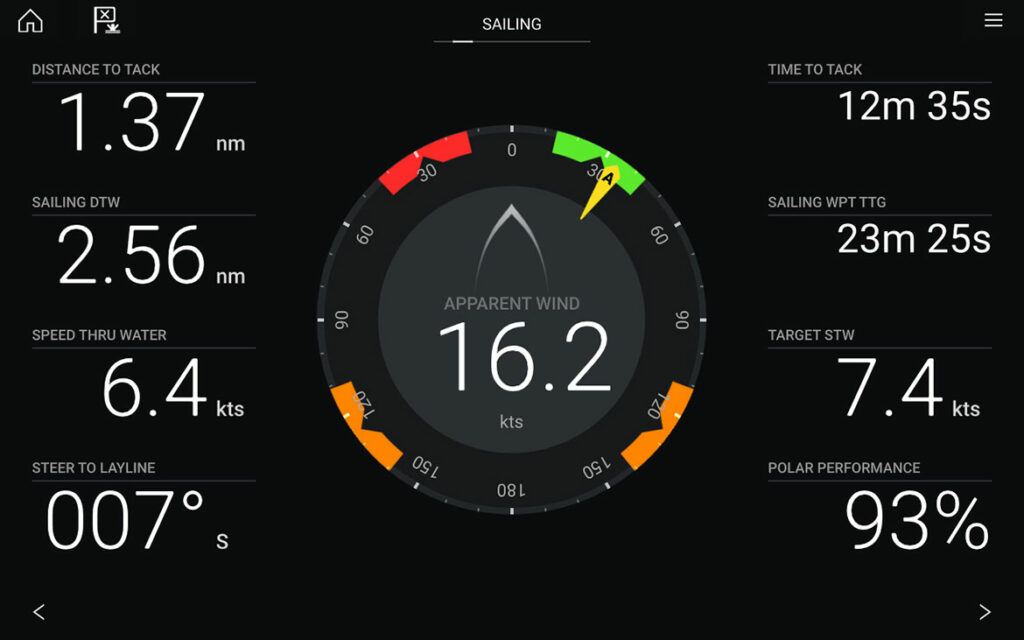Hardware and software refinements are making sailors safer, better informed and more confident in their decisions than ever, writes Greg Wells, UK Sales Account Manager, Raymarine.
Spontaneity is a valuable asset in certain contexts: no one could deny the importance of being able to think and react quickly. Nevertheless, it is imperative to have as much information as possible at your disposal before you can make truly informed decisions. When you are on the water, leaving any elements to chance is bound to have consequences, which can range from mildly inconvenient to unthinkably severe.
Technology has done so much to aid sailors’ situational awareness, making sailing not only safer but considerably more enjoyable in the process. Raymarine is committed to continue evolving this technology, providing sailors with new enhancements to its wireless and wired products, clearly presenting them with all the data they require.
On top of basic information such as compass heading, depth and boat speed, the ability to readily access GPS, wind data and detailed, up-to-date cartography – in addition to more advanced data such as AIS, radar, weather routing and laylines – is as desirable for knowledgeable decision-making on recreational sailing yachts as it is for the skippers at the helm of racing boats.
Polar information which was once the domain of offshore racers is now available, and beneficial, to all sailors. Anyone whose boat is equipped with one or more of Raymarine’s next-generation Axiom multifunction displays, with its LightHouse 3 operating system, can call up this data and make use of it.

Polars are calculations which a designer, manufacturer or sailmaker can supply to denote the speed potential of a particular boat in different wind angles and strengths. Knowing your boat’s optimal performance parameters will enable you to identify the quickest route between two points by leveraging your target speeds and wind angles, from which you can also derive your laylines.
The Velocity Made Good (VMG) principle demonstrates that travelling in a straight line often is not the most rapid solution, and recreational sailors may wish to use their boat’s performance to its best advantage if, for example, they need to speed up to reach a port in time to get a mooring or berth. The live layline display on LightHouse 3 enables sailors to maximise their VMG, displaying how far they need to sail on their current tack to reach their target waypoint after tacking, taking in to account wind conditions.
More than 300 sets of polar information are currently hosted within the Raymarine Lighthouse OS, and this figure rises with each periodic update because we also enable sailors to submit their own polars via www.raymarine.com/multifunction-displays/polar-data-import/ for integration in future releases.
The Raymarine Lighthouse OS system also accommodates a ‘Fixed Angles’ solution for sailors who either can’t find polars for their boat or who are unhappy for any reason with the supplied polars. Entering the wind angles, they feel work best for their boat into the system will enable the software to calculate target speeds and angles. Sailors have the option of also adding in the effects of current and their boat’s leeway to assist in working out the laylines to which they should be sailing.
For the full article, see: https://www.raymarine.com/view/blog/news/details/all-at-sea.html

























